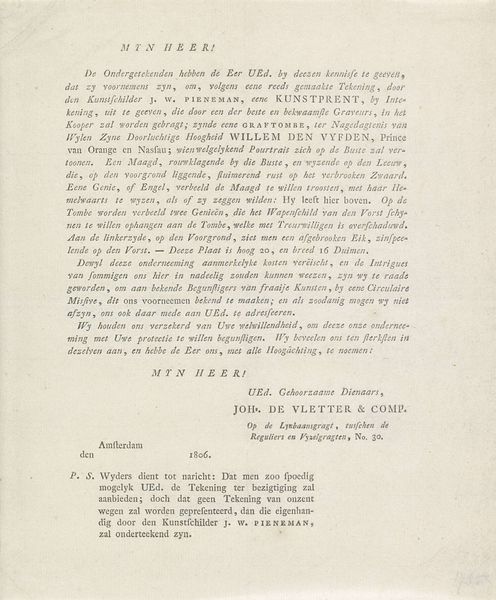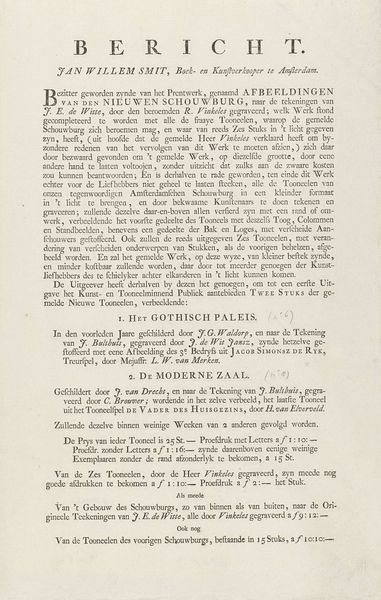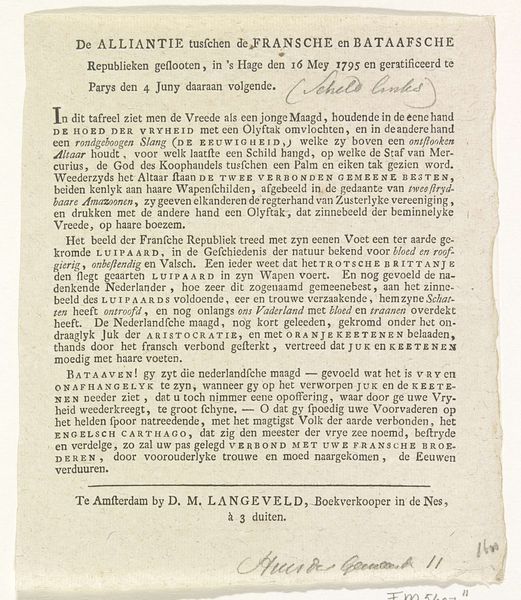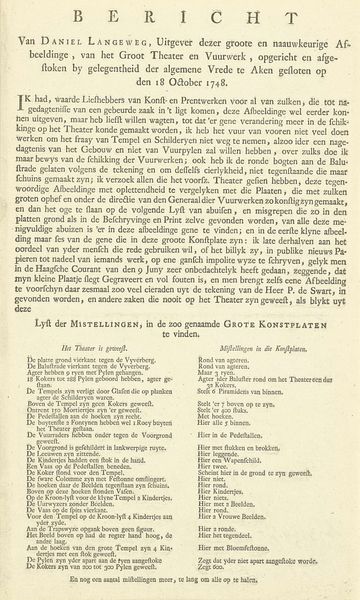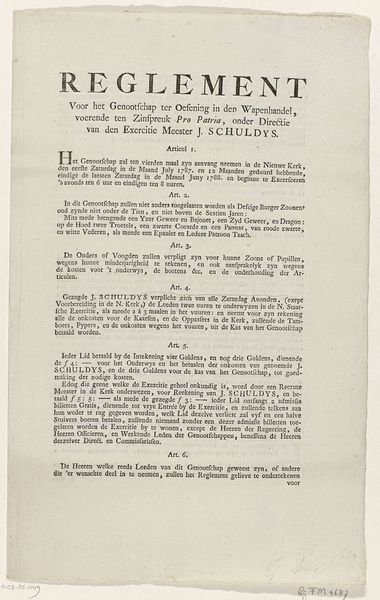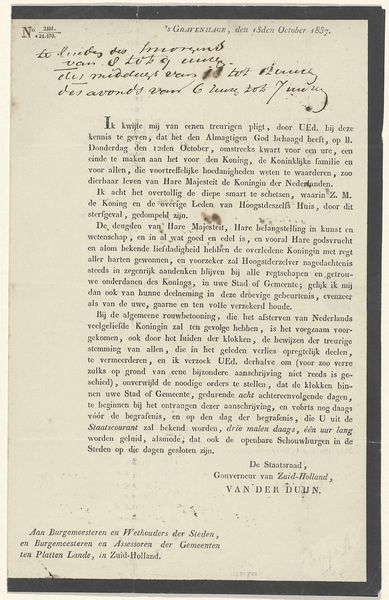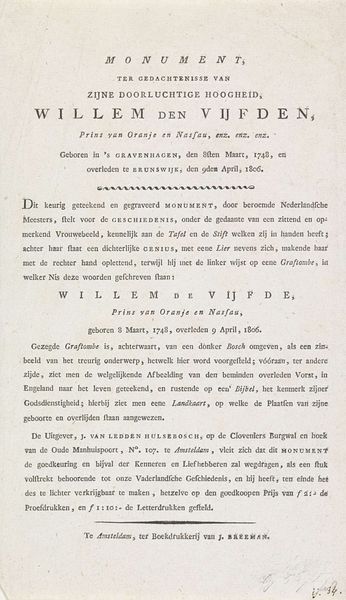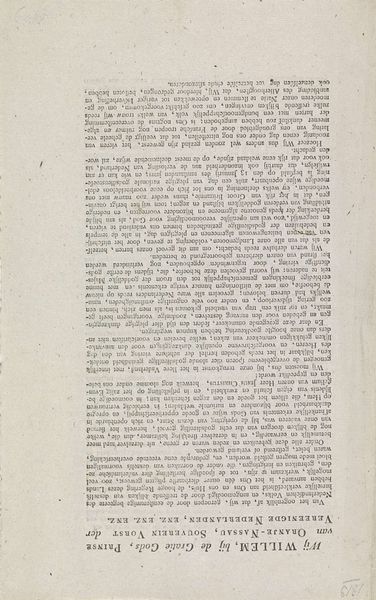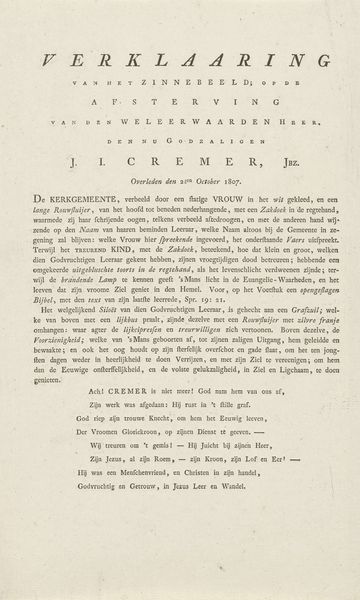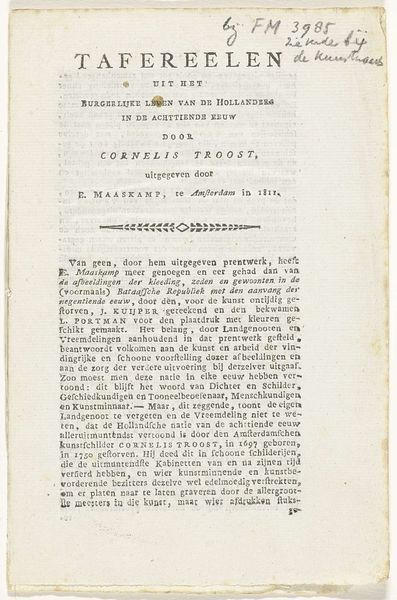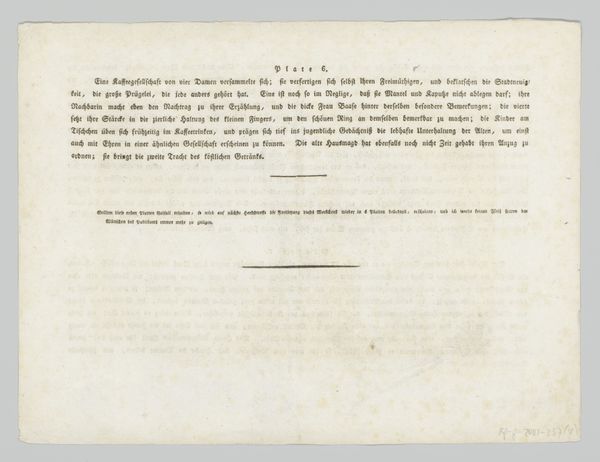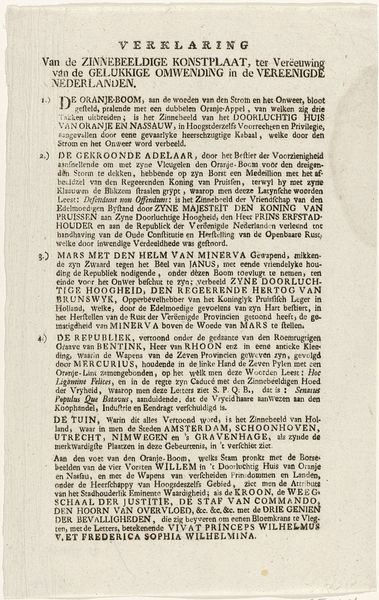
Verklaring van de prent met het allegorische grafmonument voor prins Willem V, 1806 1806
0:00
0:00
Dimensions: height 190 mm, width 123 mm
Copyright: Rijks Museum: Open Domain
J. Breeman created this print in Amsterdam in 1806, commemorating Prince William V of Orange-Nassau. It was made using engraving, a popular method for creating affordable and reproducible images. This print exemplifies the public role of art in the early 19th century, particularly in the wake of immense social and political upheaval. The image creates meaning through a set of visual codes common at the time. The allegorical figures of History and Genius flank the Prince’s tomb, their presence emphasizing his significance. Meanwhile, the inclusion of a Bible indicates his piety, and a map highlights the key locations of his life. The print can be understood as a piece of political propaganda. This was a time when the House of Orange was in exile and the Netherlands was under French rule. Prints like this served to keep the memory of the Prince alive and promoted loyalty to the House of Orange. To fully understand this image, we can look at historical documents and publications to contextualize its cultural and political references. The meaning of this print, like all art, is contingent on its social and institutional context.
Comments
No comments
Be the first to comment and join the conversation on the ultimate creative platform.
